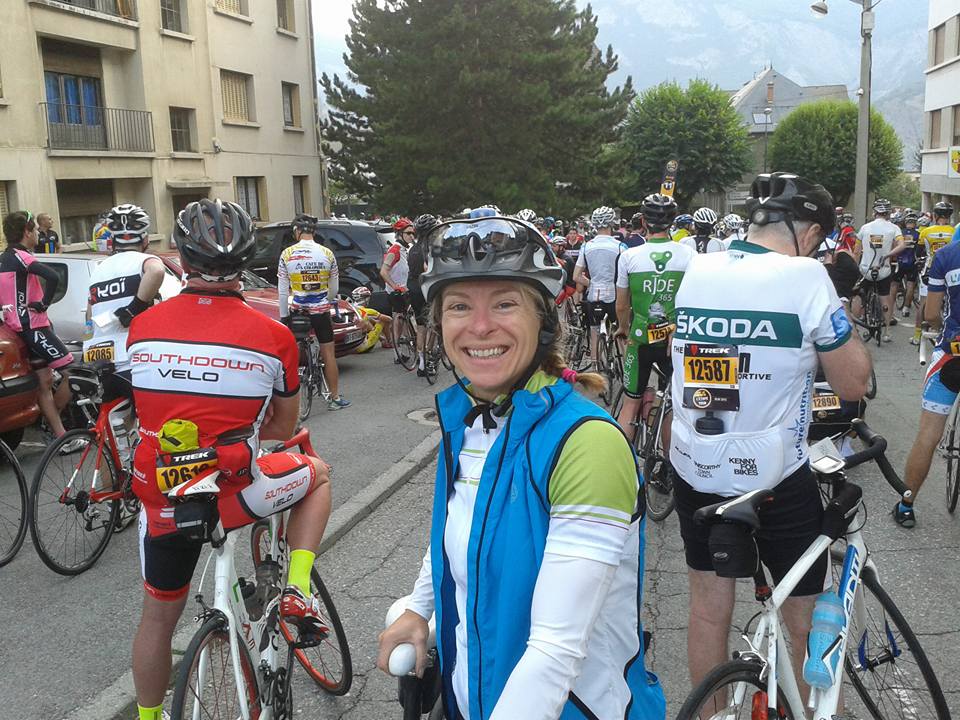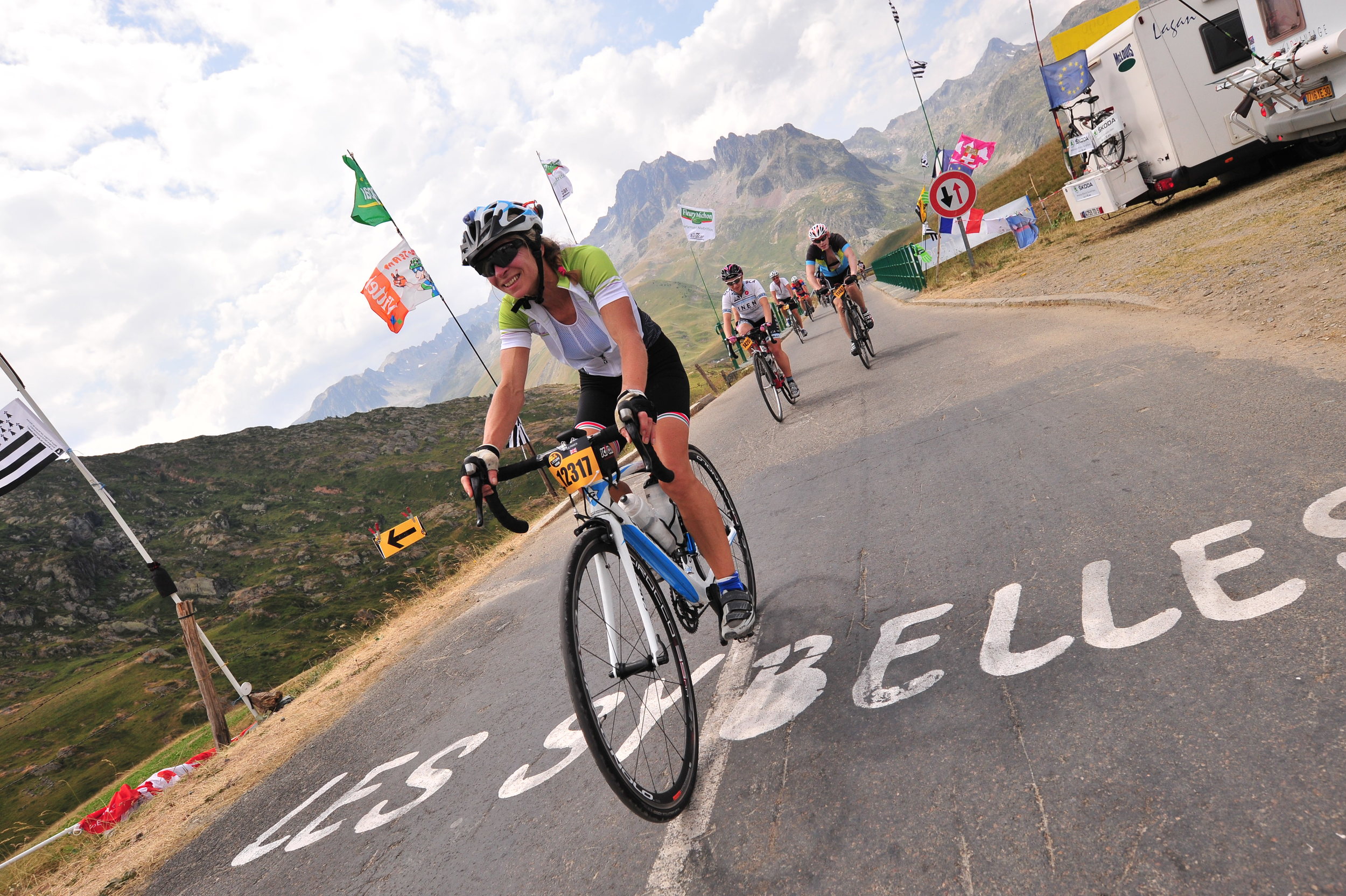Sue Pinnick: Queen of the Mountains
/In a sport that’s dominated by men, it takes female cyclists like Sue Pinnick to inspire and remind us that the mountains are for everyone.
On July 19, a few days before the Tour de France pack passed, thousands of amateur cyclists including BriTri’s Sue Pinnick and Santi Brage attempted the 23rd edition of the Etape du Tour. The Etape is a notoriously challenging race, a mountain stage of the Tour de France. This year the course was the 19th stage, between Saint-Jean-de-Maurienne and the La Toussuire-Les Sybelles resort town. This included climbs at the Chaussy, the Croix de Fer (by “Glandon”), and the Mollard Passes, and the final climb towards La Toussuire – Les Sybelles.
Sue was one of 400 female finishers. The fact that only 60% of the overall entrants crossed the finish line highlights how difficult this race is and how much you need to be physically and mentally prepared.
Phoebe Lebrecht, Publicity & Communications Officer
Phoebe caught up with Sue to hear about the race and how she prepared for the most epic challenge of her cycling career so far.
Sue, a huge achievement well done. What was it like?
Everyone was shouting “allez les filles!” Women particularly were saying “bravo!” whenever they saw you. I was cycling in a sea of blokes and the men in the crowd were shouting “Madam! Bravo!” I think this was because, even in France, it is a very male orientated sport and the stage this year was particularly tough. There was that recognition that for anyone to do it was amazing, but I certainly felt like, yeah sisterhood!
Ok, so lets talk numbers…
You do one stage of the Tour de France. Always a mountain stage. This year was the Alps and we did stage 19, which was 140km with 4600m of climbing.
How do you train for the Alps in England?
A lot of it is endurance and Strava helped to be honest. It’s all about hours in the saddle. I knew I was going to be cycling for 9-10 hours so I committed to lots of sportives: the Etape du Sussex, Spring time classic among others.
I used the sportives to get used to racing situations. It was important to practice cycling in a peloton. As for the climbing, it’s very hard to replicate the type of climbing you’ll experience in the Alps.
What really helped my confidence was a trip to the Alps in May - which I’d luckily won through Evans! I’d never climbed anything like that before in my life. We only did one mountain a day but I knew I could get up it. I pipped my husband Mike (a better cyclist than me) to the top, that’s when I knew the winter training was paying off.
Other than the Sportives, what did your winter training look like?
What really helped me was my commute to work. Two days a week I was cycling up the Beacon, three days a week I was taking on Saddlescombe.
The problem with the hills in Britain is there are plenty of these short, sharp hills but none of the relentless climbing so it [the Etape] is very difficult to train for. I went to the Lake District in Easter and I did get some good hill climbing in.
You’ve done the training. You’re on the start line. What are you thinking?
The best advice I got ahead of the Etape was not to go off too fast. It’s very easy to become competitive and a lot of the cyclists get caught up in it and shoot off.
I think women have an advantage by being good at pacing.
Talk us through the race…
There was an accident early on and we had to walk for half an hour… Downhill!
The disadvantage of signing up for the first time is that they put you at the end of the start. Therefore I knew the broom wagon was right behind me the whole time. I was chasing the cutoffs.
How did that go?
Well because of the accident, I could see it [broom wagon]. There was this horrible pressure. The worst thing was that I knew from my training that I could make the cutoffs. I had worked out that even if I was really really slow climbing, that I’d be fine. It didn’t occur to me that I wouldn’t finish or wouldn’t make the cutoff.
We got 3/4 of the way through and because of the accident people were coming down the mountain saying: don’t bother, they’ve shut it, you’re too late.
I went through this awful series of emotions and thoughts; I’ve failed, I’ve told everyone I’m doing this, I can’t believe it. I made the decision that I’d carry on until they swept me up. But I didn’t really push it then because I’d given up.
Then I got to the top and it turned out that everyone was really angry that they’d kept to these original times despite there being all these accidents delaying everyone. The french cyclists were so annoyed that they nearly got in to a punch-up with the gendarme. They were shouting “this is so unfair.” - which it was. The gendarme then gave in and opened the road.
So when I got up the top, ahead was a 15km descent. I thought to myself, I could do it but there were people flying off, breaking arms, going like crazy down the mountain.
But i took my time down the really tricky descents.
I made it safely to the bottom where they said the broom wagon was coming at 5.15pm. I checked my watch and it was 5.14pm. I looked over my shoulder, I could see the wagon but that was the last cutoff. Then it dawned on me, I could do it and I had it in my legs. It was euphoric.
Wow, what a rollercoaster of emotions. What was it like to finally cross the finish line?
I finished 1hr within the cutoff. I had to hold back the sobbing. It wasn’t just tears, it was the relief & a sheer sense of achievement. I’d done it. At that point I didn’t know how many women had entered or where I’d finished.
How many were there?
There were 800 women who entered. Which was around 6% of the total entrants. 15,000 people entered the Etape, only 9,000 finished. Out of the 800 women, only 400 finished; and I was 333rd. I’m quite pleased with that for my age.
What was your nutrition plan?
I kept my nutrition the same as in training. I had cereal bars, shot bloc and rehydration tablets. No energy gels. It was 39 degrees with no wind. It was incredibly hot and humid, I was sweating so much; at one point, my head was so hot that it felt like it was going to explode. I knew I had to keep drinking and drinking. So I made myself.
Most memorable moment?
The finish. I was about 200m to go, on a hill of course. This guy started walking towards me and I thought, he’s getting a bit close. He grabbed the back of my seat and gave me an almighty shove. You see it on the Tour de France - Merci Monsieur! I shot off.
Will you do it again?
After the race, a friend of a friend texted me: Are you doing it next year?
I wrote back: No way.
Turned my phone off and went to bed.
First message in the morning: Bet you change your mind.
I text back: I have already.
What’s your advice for those considering a challenge like this?
Train throughout the winter. Find a training buddy. Commit to doing sportives, don’t just think you’ll go out on your own because you won’t. I started in October and it really was getting those hours in the saddle that made the difference. In my opinion, forget the turbo - get out on your bike.
I also changed my cassette to a 32. This really helped me both physically and psychologically. Thousands of people had to walk up the mountains and I kept riding. You don’t need a granny ring but a few extra notches can make all the difference.
Keep everything the same on race day as it had been in training. Tyre pressure, kit, nutrition, etc. Don’t change a thing.
And… Anyone can do it.
Congratulations to Sue and Santi on their inspiring cycling efforts. If you would like to join Sue on the Etape du Tour next year, watch out for updates on how to enter via the forum.
Allez les Filles!








